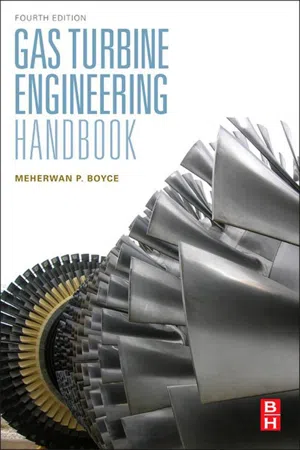
Gas Turbine Engineering Handbook
Meherwan P. Boyce
- 1,000 Seiten
- English
- ePUB (handyfreundlich)
- Über iOS und Android verfügbar
Gas Turbine Engineering Handbook
Meherwan P. Boyce
Über dieses Buch
Written by one of the field's most well known experts, the Gas Turbine Engineering Handbook has long been the standard for engineers involved in the design, selection, maintenance and operation of gas turbines. With far reaching, comprehensive coverage across a range of topics from design specifications to maintenance troubleshooting, this one-stop resource provides newcomers to the industry with all the essentials to learn and fill knowledge gaps, and established practicing gas turbine engineers with a reliable go-to reference. This new edition brings the Gas Turbine Engineering Handbook right up to date with new legislation and emerging topics to help the next generation of gas turbine professionals understand the underlying principles of gas turbine operation, the economic considerations and implications of operating these machines, and how they fit in with alternative methods of power generation.
- The most comprehensive one-stop source of information on industrial gas turbines, with vital background, maintenance information, legislative details and calculations combined in an essential all-in-one reference
- Written by an industry-leading consultant and trainer and suitable for use as a training companion or a reliable dip-in guide
- Includes hard-won information from industry experts in the form of case histories that offer practical trouble-shooting guidance and solutions
Häufig gestellte Fragen
Information
An Overview of Gas Turbines
Publisher Summary
Inhaltsverzeichnis
- Cover image
- Title page
- Table of Contents
- Copyright
- Preface to the Fourth Edition
- Preface to the Third Edition
- Preface to the Second Edition
- Preface to the First Edition
- Foreword to the First Edition
- About the Author
- Part I: Design: Theory and Practice
- Part II: Major Components
- Part III: Materials, Fuel Technology, and Fuel Systems
- Part IV: Auxiliary Components and Accessories
- Part V: Installation, Operation, and Maintenance
- Appendix. Equivalent Units
- Index